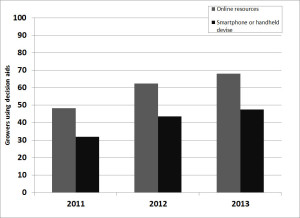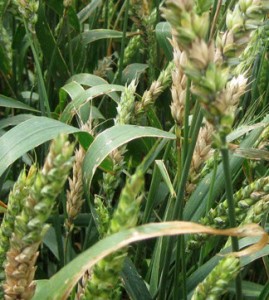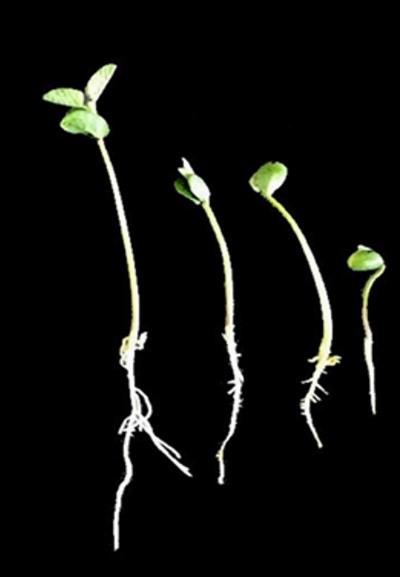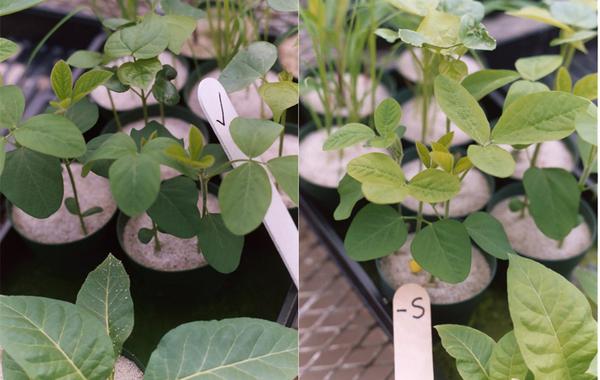
How Can We Measure Insect Management Changes in Tobacco? (Published 2013)
Yesterday, we held our annual tobacco agent training session at the Johnston County Extension Center. I always look forward …


El inglés es el idioma de control de esta página. En la medida en que haya algún conflicto entre la traducción al inglés y la traducción, el inglés prevalece.
Al hacer clic en el enlace de traducción se activa un servicio de traducción gratuito para convertir la página al español. Al igual que con cualquier traducción por Internet, la conversión no es sensible al contexto y puede que no traduzca el texto en su significado original. NC State Extension no garantiza la exactitud del texto traducido. Por favor, tenga en cuenta que algunas aplicaciones y/o servicios pueden no funcionar como se espera cuando se traducen.
Inglês é o idioma de controle desta página. Na medida que haja algum conflito entre o texto original em Inglês e a tradução, o Inglês prevalece.
Ao clicar no link de tradução, um serviço gratuito de tradução será ativado para converter a página para o Português. Como em qualquer tradução pela internet, a conversão não é sensivel ao contexto e pode não ocorrer a tradução para o significado orginal. O serviço de Extensão da Carolina do Norte (NC State Extension) não garante a exatidão do texto traduzido. Por favor, observe que algumas funções ou serviços podem não funcionar como esperado após a tradução.
English is the controlling language of this page. To the extent there is any conflict between the English text and the translation, English controls.
Clicking on the translation link activates a free translation service to convert the page to Spanish. As with any Internet translation, the conversion is not context-sensitive and may not translate the text to its original meaning. NC State Extension does not guarantee the accuracy of the translated text. Please note that some applications and/or services may not function as expected when translated.
Collapse ▲
Yesterday, we held our annual tobacco agent training session at the Johnston County Extension Center. I always look forward …

Many peanut growers had a hard time getting in their fields for the first leaf spot spray, which should …

Head Scab is being found throughout North Carolina. Growers need to scout their fields now to determine if DON …
Stripe rust has arrived in North Carolina. Growers should be watching for the development of stripe rust “hot-spots” in …
Many growers are reporting that their wheat is not greening up after topdressing. Causes for this can include cold …
Hessian fly have been reported in wheat fields across the state. New control recommendations are available. Herbicide resistant chickweed is …
Wheat acreage is likely to be up again this coming season, and seed supply of our most popular varieties …
Planting last fall began in early October and continued into December. Weather conditions have been unseasonably warm. This resulted …
Many acres of off color wheat are showing up around North Carolina. Causes of these symtoms include herbicide carry-over, …

Grapevines require 16 essential nutrients for normal growth and development (Table 9.1). Carbon, hydrogen, and …

This guide presents basic facts about seeds, including how they develop, how to store and …

This Soybean Nutrient Deficiency Information factsheet describes the symptoms and management of boron deficiency in …
This Soybean Nutrient Deficiency Information factsheet describes the symptoms and management of zinc deficiency in …

This Soybean Nutrient Deficiency Information factsheet describes the symptoms and management of molybdenum deficiency in …

This Soybean Nutrient Deficiency Information factsheet describes the symptoms and management of aluminum toxicity in …

This Soybean Nutrient Deficiency Information factsheet describes the symptoms and management of sulfur deficiency in …

This Soybean Nutrient Deficiency Information factsheet describes the symptoms and management of magnesium deficiency in …